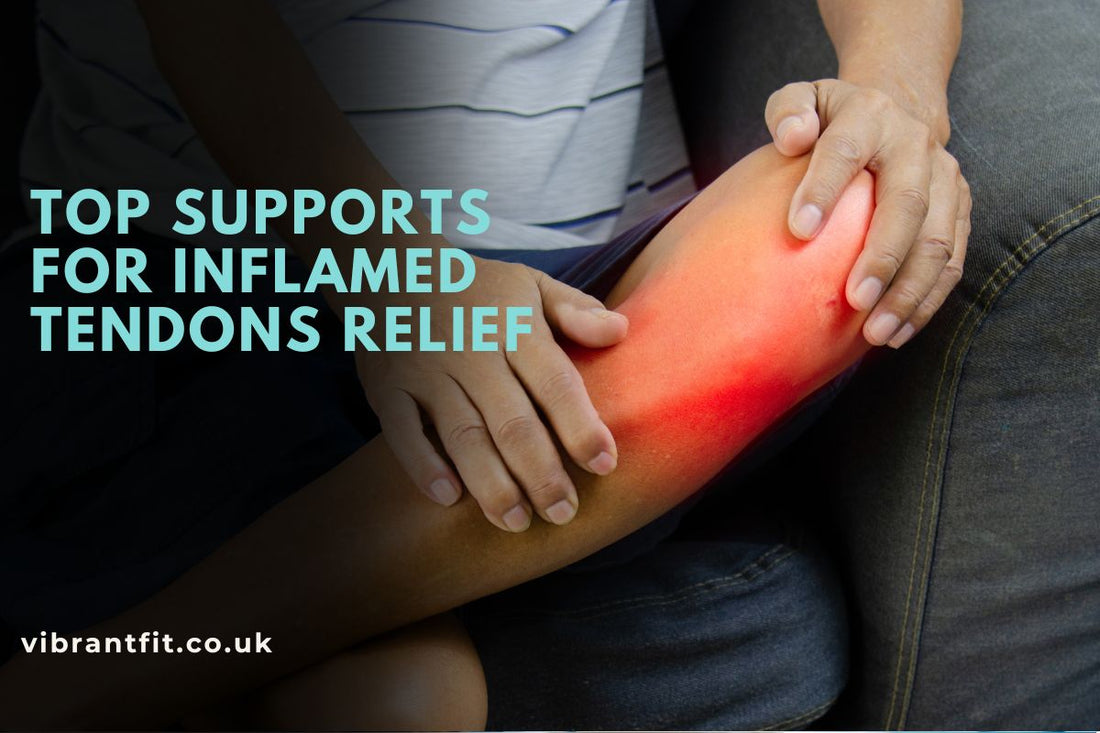
What are Inflamed Tendons?
Share
Inflamed tendons, commonly called tendonitis, cause discomfort and restrict movement. Tendons are strong cords that connect muscles to bones, enabling joint movement. When these tendons become irritated or swollen, it results in inflammation known as tendonitis. This condition can occur anywhere in the body but is most frequent in the shoulder, elbow, wrist, knee, and Achilles tendon. People often notice pain and stiffness, especially when moving the affected area. Knowing what tendonitis is helps in managing the condition and easing symptoms.
What Are Inflamed Tendons?

Tendons act as bridges between muscles and bones, allowing smooth movement. When inflamed, tendons become painful and swollen—a condition known as tendonitis or tendinitis. Sometimes, the sheath around the tendon also becomes inflamed, which is called tenosynovitis. Tendonitis names often reflect the affected area, like Achilles tendonitis at the ankle or tennis elbow at the elbow. Identifying the exact location helps in providing the correct treatment.
Causes of Tendon Inflammation
Tendonitis usually develops from overuse or repetitive motion that strains the tendon. Activities like typing, gardening, or sports such as tennis and running can irritate tendons over time. Sudden or awkward movements may also injure the tendon. Poor posture and joint deformities can increase tendon stress. Underlying health conditions such as diabetes, rheumatoid arthritis, gout, or osteoarthritis may contribute. Some medications, including statins and fluoroquinolone antibiotics, might also trigger tendonitis. Infections are less common causes but possible.
Risk Factors for Developing Tendonitis
Anyone can develop tendonitis, but certain factors raise the risk. Age plays a role, as tendons lose elasticity and become more prone to injury over time. Repetitive tasks, like painting or sports (tennis, golf), increase risk. Muscle weakness or poor conditioning around joints places extra strain on tendons. Incorrect posture or poor technique during physical activity can also cause problems. Being aware of these risk factors allows you to take steps to protect your tendons.
Signs and Symptoms of Inflamed Tendons

Tendonitis symptoms usually include:
-
Pain near the affected tendon, worsening with movement.
-
Swelling and stiffness around the joint.
-
Warmth or redness over the tendon.
-
Crackling or popping sensations during movement.
-
Lumps or knots felt along the tendon.
Treatment Options for Inflamed Tendons
Initial treatment often involves self-care using the RICE method:
-
Rest: Avoid activities that strain the tendon.
-
Ice: Apply ice packs to reduce swelling and pain.
-
Compression: Use braces or splints to support and reduce inflammation.
-
Elevation: Keep the injured area raised above heart level.
Over-the-counter anti-inflammatory medicines (NSAIDs) can relieve pain. If symptoms persist, physical therapy may help improve flexibility and strength. Corticosteroid injections might be recommended for stubborn inflammation. Surgery is rare and reserved for severe or chronic cases. Antibiotics are necessary if an infection causes the inflammation.
Healing Time and Prognosis
Healing relies on prompt treatment and severity. While serious instances can take months, moderate tendonitis should go away in a few weeks. Crucially, rest and prevention of re-injury depend on each other. Re-injury can result from too early tendon stress, even though most people fully recover. Long-term results depend on patience and slow return to activity.
Also read : What Is Joint Effusion
Supportive Braces That Help Ease Tendonitis

If you’re dealing with tendonitis, having the right brace can really help ease the pain and speed up healing. The Dual-Shell Ankle Stabilizer Brace is great for giving your ankle extra support and stability when the tendon is inflamed. For issues with your thumb or wrist, the ErgoThumb Spica Splint gently holds the area still while staying comfortable and breathable. If your elbow or forearm is affected, the Tennis Elbow Support Brace uses a soft gel pad and adjustable strap to take the pressure off and reduce pain. The Elbow Relief Brace also offers firm support and compression, perfect for tennis elbow or general elbow tendonitis. Wearing these braces can protect your tendons from further strain and help you get back to feeling better.
Conclusion
Tendon inflammation can cause a lot of pain, but with proper care recovery is achievable. Knowing the reasons and indicators enables you to act quickly. Rest, ice, and supportive braces are easy therapies that can help with pain relief and healing. Avoiding recurrence depends on employing good technique and pausing to help to prevent more harm. Getting expert guidance guarantees you obtain the finest care should problems linger. These actions will enable you to comfortably resume your regular chores and recover strength.
